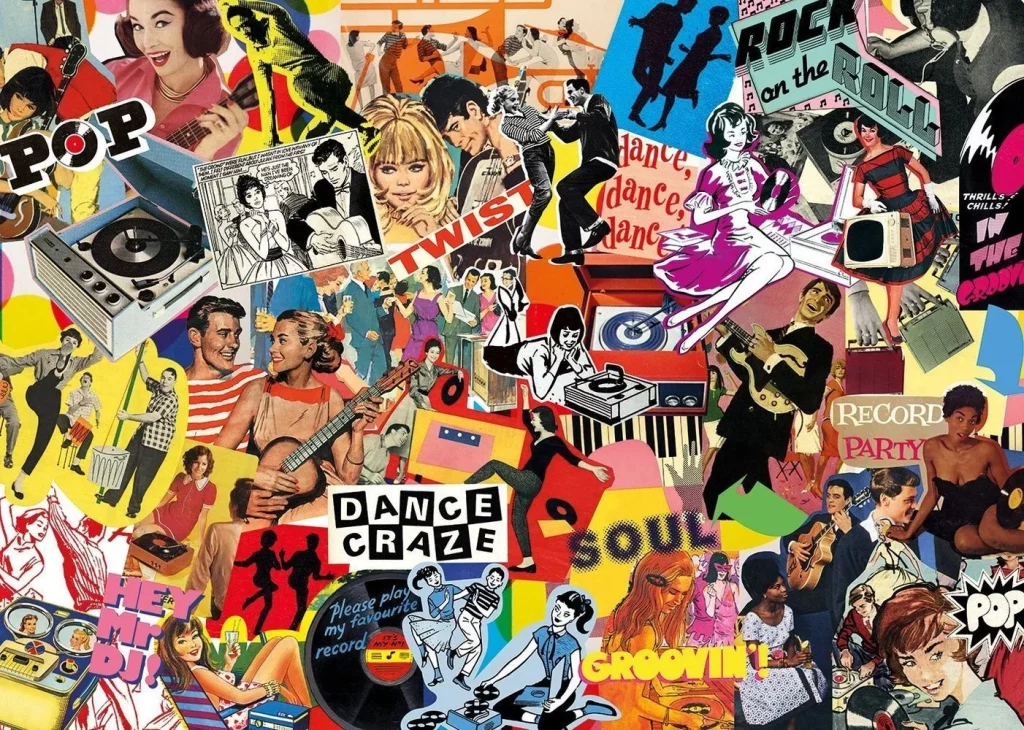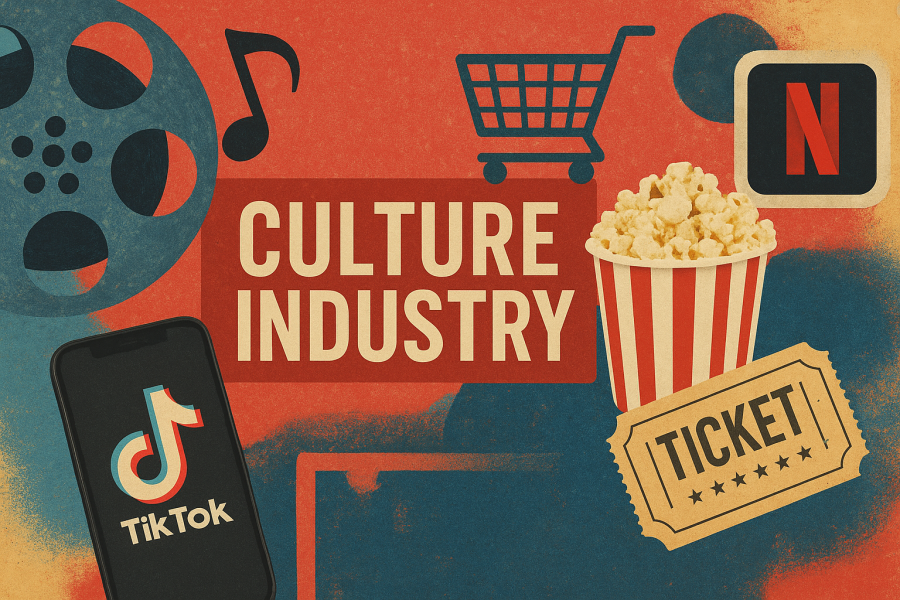
The concept of the culture industry was first introduced by Theodor Adorno and Max Horkheimer in Dialectic of Enlightenment (1944), where they argued that cultural production under capitalism becomes a form of industrial mass production. Rather than reflecting creativity or individuality, culture turns into a commodity designed for profit and social control (Adorno and Horkheimer, 1944). The culture industry therefore represents a system where music, film, and entertainment are produced not primarily to express ideas, but to maintain consumption and conformity.
In this system, art becomes standardised and predictable. Adorno and Horkheimer criticised Hollywood for producing repetitive narratives that ensure emotional satisfaction without critical thought. This formulaic production persists today — in streaming platforms like Netflix or Spotify, where algorithms recommend similar content to maximise engagement and profit (Hesmondhalgh, 2019). For instance, the popularity of superhero franchises or reality television shows demonstrates how repetition and familiarity attract audiences while discouraging reflection on deeper social issues.

Digital culture has only intensified this industrialisation of creativity. Social media platforms such as TikTok and Instagram commodify user-generated content, turning self-expression into data and advertising (Jin, 2018). Influencers often present themselves as authentic, yet their visibility depends on algorithms and brand sponsorships, illustrating how even individuality is packaged as a commercial product (Abidin, 2020). Thus, the boundaries between art, entertainment, and marketing have blurred in the digital economy.

However, scholars also highlight that mass culture is not entirely negative. While Adorno viewed audiences as passive consumers, later critics such as John Fiske (1989) argued that popular culture can be reinterpreted and resisted by active audiences. Digital platforms, for example, allow users to remix, parody, or subvert mainstream messages, creating alternative forms of meaning. Therefore, while the culture industry standardises content, it also provides spaces for creativity and participation.
In conclusion, the culture industry remains a powerful framework for understanding how capitalism shapes cultural life. From Hollywood blockbusters to TikTok trends, culture continues to be both an economic product and a social force. Recognising this duality encourages a more critical engagement with media — reminding us to enjoy culture, but also to question who profits from it and how it influences the way we think.
References
Abidin, C. (2020) Mapping Internet Celebrity on TikTok: Exploring Attention Economies and Visibility Labours. Cultural Science Journal, 12(1), pp. 77–103.
Adorno, T. W. and Horkheimer, M. (1944) Dialectic of Enlightenment. New York: Herder and Herder.
Fiske, J. (1989) Understanding Popular Culture. London: Routledge.
Hesmondhalgh, D. (2019) The Cultural Industries. 4th edn. London: SAGE.
Jin, D. Y. (2018) Digital Platforms, Imperialism and Political Culture. New York: Routledge.


I think it’s really interesting how you referenced social media in your post because I feel like the culture industry on social media only gets worse as time moves on. While there are positive aspects to mass culture, they’re so heavily outweighed by the bad that it’s not even a competition. For example, with AI, not only can you copy or plagiarize art, but you can’t even trust videos with real people included, because those could have been stolen without the original creators’ knowledge and altered to spread misinformation with their face and name attached. If you asked high school me about the culture industry on social media, I would’ve been mixed, now? It’s almost entirely negative, which I think boils down to how unsupervised and uncontrolled it is as people get bolder and more comfortable online.